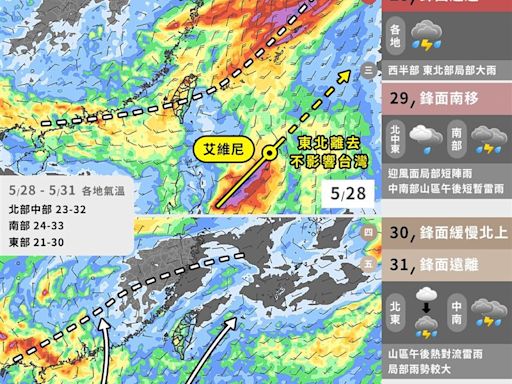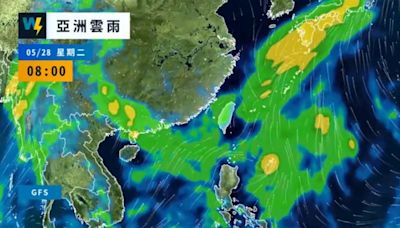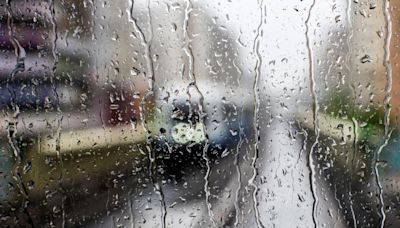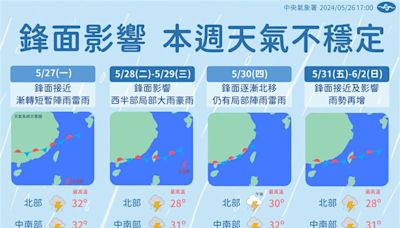搜尋結果
❗ 豪雨特報
鋒面接近,今(27日)晚至明(28)日南投及花蓮山區有局部大雨發生的機率,請注意瞬間大雨及強陣風,山區慎防坍方及落石。西半部地區及澎湖、金門、馬祖亦有局部較大雨勢發生的機率,請注意。
發布時間:05/27 21:02

哥倫布
OH, 美國
多雲27°14°23°C- Monday局部多雲27°14°
- Tuesday雷雨23°12°
- Wednesday零星陣雨23°9°
- Thursday晴朗23°8°
- Friday晴朗23°9°
Powered by
The climate in the United Kingdom is defined as a humid temperate oceanic climate, or Cfb on the Köppen climate classification system, a classification it shares with most of north-west Europe. [1] Regional climates are influenced by the Atlantic Ocean and latitude. Northern Ireland, Wales and western parts of England and Scotland, being ...
This article is about contemporary climate change. For historical climate trends, see Climate variability and change. Changes in surface air temperature over the past 50 years. [1] . The Arctic has warmed the most, and temperatures on land have generally increased more than sea surface temperatures.
- History
- Forecast Sub-Organizations
- Data Acquisition
- Event-Driven Products
- Product Dissemination
- Technology
- Organization
- Privatization and Dismantling Attempts
- Accuracy Problems
1870-1899
Calls for the creation of a government weather bureau began as early as 1844, when the electrical telegraph was introduced. In 1869, Cleveland Abbe began developing probabilistic forecasts using daily weather data sent via telegraph by the Cincinnati Chamber of Commerce and Western Union, which he convinced to back the collection of such information. Meanwhile, Increase A. Lapham of Wisconsin lobbied Congress to create such a service, having witnessed the destructive power of storms in the Gr...
20th century
The first Weather Bureau radiosonde was launched in Massachusetts in 1937, which prompted a switch from routine aircraft observation to radiosondes within two years. The Bureau prohibited the word "tornado" from being used in any of its weather products out of concern for inciting panic (a move contradicted in its intentions by the high death tolls in past tornado outbreaks due to the lack of advanced warning) until 1938, when it began disseminating tornado warnings exclusively to emergency m...
The NWS, through a variety of sub-organizations, issues different forecasts to users, including the general public. Although, throughout history, text forecasts have been the means of product dissemination, the NWS has been using more forecast products of a digital, gridded, image or other modern format. Each of the 122 Weather Forecast Offices (WF...
Surface observations
The primary network of surface weather observation stations in the United States is composed of Automated Surface Observing Systems (ASOS). The ASOS program is a joint effort of the National Weather Service (NWS), automatic weather station(AWS), the Federal Aviation Administration (FAA), and the Department of Defense (DOD). ASOS stations are designed to support weather forecast activities and aviation operations and, at the same time, support the needs of the meteorological, hydrological, and...
Marine observations
NWS forecasters need frequent, high-quality marine observations to examine conditions for forecast preparation and to verify their forecasts after they are produced. These observations are especially critical to the output of numerical weather models because large bodies of water have a profound impact on the weather. Other users rely on the observations and forecasts for commercial and recreational activities. To help meet these needs, the NWS's National Data Buoy Center (NDBC) in Hancock Co...
Upper air observations
Upper air weather data is essential for weather forecasting and research. The NWS operates 92 radiosonde locations in North America and ten sites in the Caribbean. A small, expendable instrument package is suspended below a 2 metres (6.6 ft) wide balloon filled with hydrogen or helium, then released daily at or shortly after 1100 and 2300 UTC, respectively. As the radiosonde rises at about 300 meters/minute (1,000 ft/min), sensors on the radiosonde measure profiles of pressure, temperature, a...
The National Weather Service has developed a multi-tier concept for forecasting or alerting the public to all types of hazardous weather: 1. Outlook – Hazardous Weather Outlooks are issued daily by individual Weather Forecast Offices to address potentially hazardous weather or hydrologic events that may occur over the next seven days. The outlook w...
NOAA Weather Radio All Hazards (NWR), promoted as "The Voice of the National Weather Service", is a special radio system that transmits uninterrupted weather watches, warnings and forecasts 24 hours a day directly from a nearby NWS office, with the broadcasts covering across 95–97% of the United States' population. The system – which is owned and o...
The WSR-88D Doppler weather radar system, also called NEXRAD, was developed by the National Weather Service during the mid-1980s, and fully deployed throughout the majority of the United States by 1997. There are 158 such radarsites in operation in the U.S., its various territorial possessions and selected overseas locations. This technology, becau...
As of 2016, the National Weather Service was organized as follows 1. Chief Information Officer 2. National Centers for Environmental Prediction (NCEP) 2.1. Aviation Weather Center (AWC) 2.2. Climate Prediction Center(CPC) 2.3. Environmental Modeling Center(EMC) 2.4. Weather Prediction Center(WPC) 2.5. Ocean Prediction Center(OPC) 2.6. NCEP Central ...
While respected as one of the premier weather organizations in the world, the National Weather Service has been perceived by some conservatives in 2005 as competing unfairly with the private sector. National Weather Service forecasts and data, being works of the federal government, are in the public domainand thus available to anyone for free in ac...
Critics such as University of Washington professor Cliff Mass have claimed that NWS forecasts are not as accurate as they could be, and that this has resulted in inaccurate daily weather forecasts and dangerously bad predictions concerning the location and intensity of extreme weather events like blizzards and hurricanes. In 2016, the British Met O...
In aviation, visual meteorological conditions ( VMC) is an aviation flight category in which visual flight rules (VFR) flight is permitted—that is, conditions in which pilots have sufficient visibility to fly the aircraft maintaining visual separation from terrain and other aircraft.
They are defined as lying in the most unusual ten percent (10th or 90th percentile of a probability density function). [2] The main types of extreme weather include heat waves, cold waves and heavy precipitation or storm events, such as tropical cyclones. The effects of extreme weather events are economic costs, loss of human lives, droughts ...
Space weathering. Space weathering is the type of weathering that occurs to any object exposed to the harsh environment of outer space. Bodies without atmospheres (including the Moon, Mercury, the asteroids, comets, and most of the moons of other planets) take on many weathering processes: collisions of galactic cosmic rays and solar cosmic ...
The Arctic oscillation ( AO) or Northern Annular Mode / Northern Hemisphere Annular Mode ( NAM) is a weather phenomenon at the Arctic pole north of 20 degrees latitude. It is an important mode of climate variability for the Northern Hemisphere. The southern hemisphere analogue is called the Antarctic oscillation or Southern Annular Mode (SAM).










